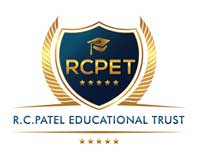History Innovative Teaching Methods
Innovative teaching methods can significantly enhance the learning experience in history by making the subject more engaging, interactive, and relevant to students.
1. Project-Based Learning (PBL) :
Encourage students to work on projects that involve in-depth research on historical events, figures, or periods. This method promotes critical thinking and allows students to explore history in a more immersive way.
2. Role-Playing and Simulations :
Organize role-playing activities where students take on the roles of historical figures and re-enact significant events. Simulations of historical events, such as mock trials or debates, can help students understand different perspectives and the complexity of historical issues.
3. Use of Technology and Digital Tools :
Incorporate multimedia presentations, interactive timelines, virtual reality (VR) experiences, and online databases into the curriculum. Digital tools like Google Earth can help students visualize historical locations and events geographically.
4. Flipped Classroom :
Assign readings, videos, or podcasts for students to review at home, and use classroom time for discussions, activities, and problem-solving. This method encourages active learning and allows for more in-depth exploration of historical topics during class.
5. Primary Source Analysis :
Provide students with primary source documents such as letters, diaries, photographs, and newspaper articles. Teach them how to analyse these sources critically, which helps develop their research and analytical skills.
6. Field Trips and Site Visits :
Arrange visits to museums, historical sites, and cultural institutions. These experiences provide tangible connections to historical events and periods, making learning more concrete and memorable.
7. Guest Speakers and Experts :
Invite historians, archaeologists, and other experts to speak with students. This can provide insights into current research and offer diverse perspectives on historical topics.
8. Interdisciplinary Approach :
Integrate history with other subjects like literature, geography, art, and science. For example, studying the Renaissance period could include exploring its impact on art, science, and society.
9. Creative Assignments :
Encourage students to express their understanding of historical events through creative means such as writing historical fiction, creating documentaries, designing posters, or developing websites.
10. Student-Led Discussions and Debates :
Facilitate student-led discussions and debates on historical topics. This approach promotes active participation, critical thinking, and the ability to articulate and defend a position based on historical evidence.
These innovative methods can help make history more engaging and relevant for students, encouraging them to develop a deeper understanding and appreciation for the subject.
